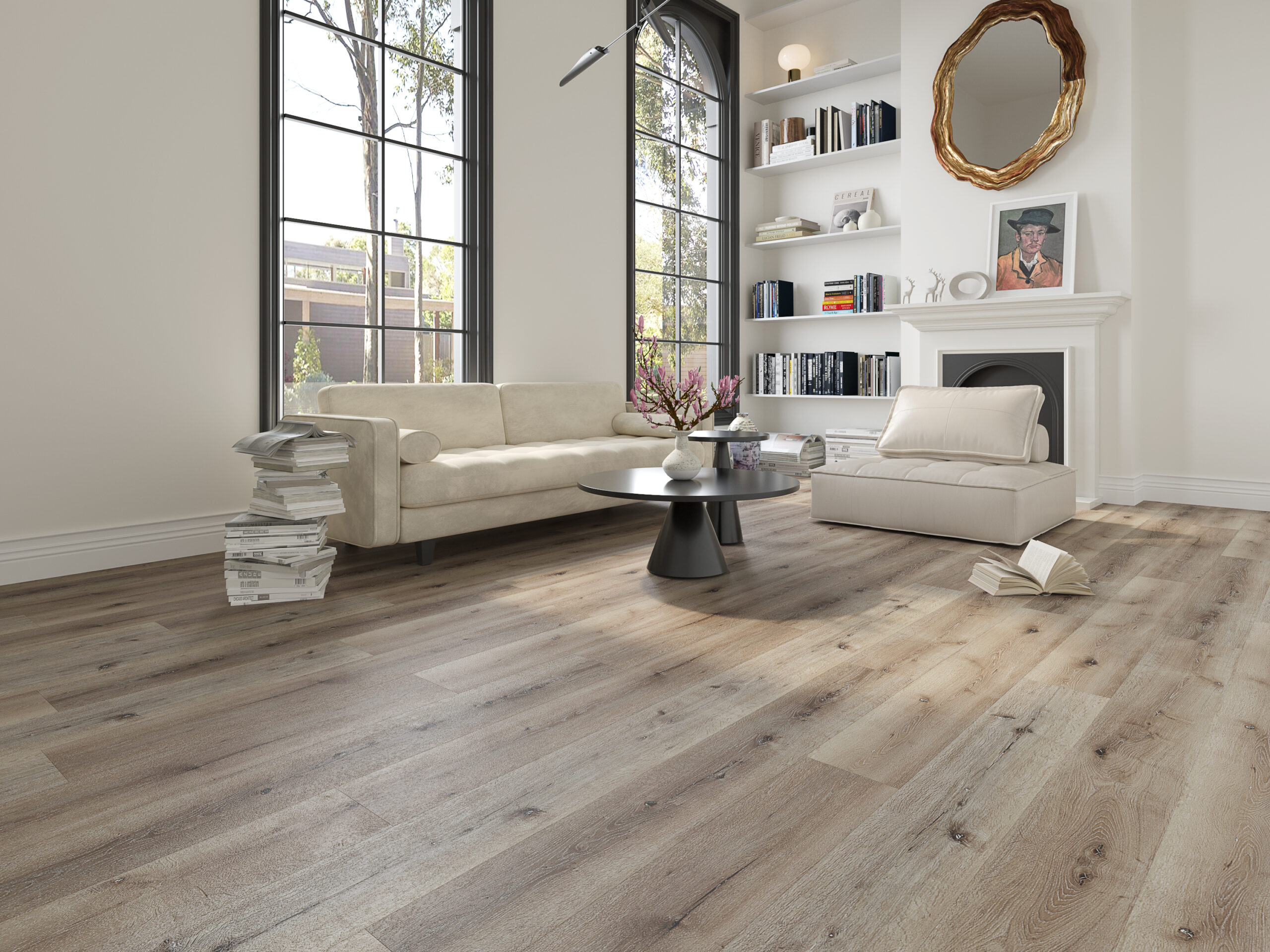Water Underfloor Heating Systems for Laminate and Vinyl LVT Flooring

Water Underfloor Heating Systems for Laminate Flooring and Vinyl LVT Flooring
Underfloor heating (UFH) is an efficient and comfortable heating solution that can be effectively used with both laminate and vinyl flooring. When properly installed, UFH provides consistent warmth and enhances the overall comfort of your space.
Laminate Flooring and Underfloor Heating
Laminate flooring is compatible with underfloor heating systems. It is essential to ensure that the laminate product is specifically designed for use with UFH. Manufacturers often provide guidelines indicating the suitability of their products for heated floors. For instance, Pergo offers laminate floors that are compatible with underfloor heating systems.
Vinyl Flooring LVT and Underfloor Heating
Vinyl flooring, including luxury vinyl tiles (LVT), is also suitable for use with underfloor heating. Vinyl’s thin profile allows efficient heat transfer, making it a popular choice for heated floors. However, it’s important to verify that the selected vinyl product is approved for use with UFH systems, as some vinyl floors have specific temperature limitations. Warmup, a provider of underfloor heating solutions, confirms that electric underfloor heating is suitable under vinyl floors, with the temperature not exceeding 27°C.
To ensure optimal performance and longevity, the heating system’s temperature should be carefully regulated, typically not exceeding 27°C. Utilizing a thermostat with a floor sensor can help maintain consistent temperatures and prevent overheating. Proper installation techniques, such as ensuring a smooth and well-prepared subfloor, are essential to avoid any issues with the vinyl flooring over time.
Installation Considerations
-
Subfloor Preparation: A clean, dry, and level subfloor is essential for the successful installation of underfloor heating beneath laminate or vinyl flooring.
-
Underfloor heating insulation panels: Selecting an appropriate underfloor heating panels can enhance heat transfer and provide necessary moisture protection.
-
Temperature Monitoring: Utilizing a thermostat with a floor sensor helps maintain consistent temperatures, protecting the flooring material from potential damage due to overheating.
By adhering to manufacturer guidelines and ensuring proper installation, underfloor heating can be a highly effective and comfortable heating solution for spaces with laminate or vinyl flooring.
Water-based underfloor heating systems are compatible with both laminate and vinyl flooring, offering an efficient and comfortable heating solution. Proper installation and adherence to manufacturer guidelines are essential to ensure optimal performance and longevity of your flooring.
Laminate Flooring and Water-Based Underfloor Heating
-
Compatibility: Laminate flooring is suitable for use with water-based underfloor heating systems. To maximize heat transfer, it is recommended that the laminate thickness does not exceed 18mm.
-
Installation Considerations:
- Floating Installation: Laminate flooring is often installed using a floating method, where the boards are not glued or nailed down but rest on the underlay and subfloor. This allows for natural expansion and contraction.
- Temperature Monitoring: It’s crucial to ensure that the floor surface temperature does not exceed 27°C to prevent damage to the laminate. Utilizing a floor temperature sensor can help maintain appropriate heat levels.
Vinyl Flooring and Water-Based Underfloor Heating
-
Compatibility: Most vinyl flooring, including luxury vinyl tiles (LVT), is suitable for water-based underfloor heating systems. Due to its thin nature, vinyl allows efficient heat transfer, making it an excellent choice for underfloor heating.
-
Installation Considerations:
- Temperature Monitoring: Always check the manufacturer’s recommended maximum floor surface temperature, typically around 27°C, to avoid potential discoloration or damage.
- Floor Preparation: Ensure the subfloor is clean, dry, and level before installation. In some cases, applying a suitable primer and a thin layer of levelling compound over the heating system may be necessary to provide a smooth surface for the vinyl flooring.
General Recommendations
-
Manufacturer Guidelines: Always consult the flooring manufacturer’s instructions to confirm that the chosen laminate or vinyl product is compatible with underfloor heating systems.
-
Thermal Resistance: Opt for flooring materials with suitable thermal resistance to ensure efficient heat transfer and system performance.
-
Professional Installation: Engage qualified professionals for the installation of both the underfloor heating system and the flooring to ensure adherence to best practices and safety standards.
By following these guidelines and consulting with manufacturers, you can enjoy the combined benefits of water-based underfloor heating and the aesthetic appeal of laminate or vinyl flooring.
